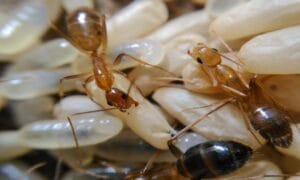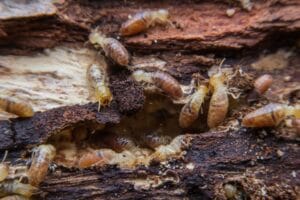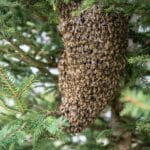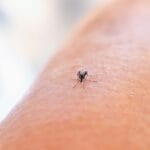Key Takeaways
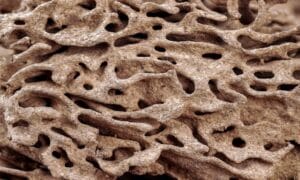
- Early detection of termites can save thousands in repair costs.
- Regular inspections are crucial for termite prevention and peace of mind.
- Termite prevention treatments are a worthwhile investment compared to damage repair costs.
- Professional termite prevention is often more cost-effective than DIY in the long run.
- Understanding the signs and costs associated with termite damage is key to making informed decisions.
Spot the Signs: Early Detection of Termites
Imagine you’re enjoying a quiet evening at home when you notice a hollow sound in your woodwork. That’s often the first sign of a termite problem. Termites are sneaky pests that can cause extensive damage to your home before you even realize they’re there. That’s why knowing what to look for is your first line of defense.
Visual Indicators of Termite Presence
Termites are not always out in the open, but they do leave clues. Look for mud tubes along the foundation of your home, which termites use to travel and protect themselves. These tubes are about the width of a pencil and can usually be found near the ground. Wood that sounds hollow when tapped, discarded wings near doors or windowsills, and wood that crumbles easily are also telltale signs.
Sounds and Smells: Subtle Clues of Infestation
Besides visual cues, termites can sometimes be heard and smelled. A quiet clicking sound coming from the walls is a sign of termites. This noise is made by termites as they chew through wood or when soldier termites bang their heads against the wood to signal danger to the colony. A mild, musty odor can also indicate a termite infestation, especially if it’s coming from areas with wood damage.
Regular Inspection Checklist: What to Look for
- Check for mud tubes on exterior walls.
- Inspect wood structures for hollow sounds or visible damage.
- Look for termite droppings, which resemble sawdust or coffee grounds.
- Monitor for swarms, especially during spring, which is termite season.
The True Cost of Termite Prevention
Preventing termites is always less expensive than repairing the damage they cause. Let’s break it down: It usually costs between $100-$500 for a professional termite inspection, which is a small price to pay considering that termite damage can run into the thousands. Regular inspections and preventive treatments are investments in the longevity of your home.
Initial Inspections: Investment for Peace of Mind
When you purchase a home, or periodically as a homeowner, investing in a termite inspection is a wise choice. It’s like a health check-up for your home. An inspector will look for signs of termite activity, identify potential risks, and provide recommendations to keep your home termite-free. This initial cost is minimal compared to the peace of mind it provides.
Preventive Treatments: A Breakdown of Options and Costs
“An ounce of prevention is worth a pound of cure.” – Benjamin Franklin
Benjamin Franklin’s wisdom rings true when it comes to termite prevention. There are various treatment options available, such as liquid barrier treatments and bait systems, ranging from $1,200 to $3,500 depending on the size of your property and the severity of any existing termite activity. These treatments are designed to create a protective shield around your home, deterring termites from taking up residence.
DIY vs. Professional Prevention: Weighing the Long-Term Costs
While it might be tempting to tackle termite prevention on your own, it’s important to consider the effectiveness and long-term costs. DIY treatments can be less expensive upfront, but without the expertise of a professional, you might miss signs of termites or apply treatments incorrectly, leading to more expenses down the road. Therefore, hiring a professional is often the more cost-effective choice in the long run.
Remember, the goal is to keep your home safe and maintain its value, and that means making smart choices about termite prevention. Stay vigilant, schedule regular inspections, and opt for professional treatments to ensure your home stays termite-free.
Understanding Termite Damage
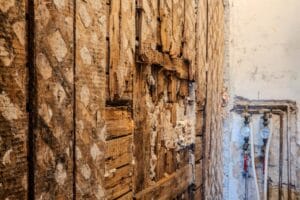
Termites don’t just cause cosmetic damage; they can eat away at the very structure of your home. These little critters can compromise the integrity of wood, leading to costly repairs. It’s not just about the visible damage; it’s the unseen weakening of beams and supports that poses the greatest risk.
Structural Havoc: The Hidden Threat of Termites
When termites infest, they can silently destroy the structural components of your home. Over time, this can lead to sagging floors, walls, and ceilings. The longer termites are left unchecked, the more extensive—and expensive—the damage becomes. It’s not just a nuisance; it’s a safety hazard.
Repair or Replace: Making the Right Choice for Your Home
When facing termite damage, you’ll have to decide whether to repair or replace the affected areas. Small, localized damage might be repairable, but extensive structural damage often requires replacement of the affected wood. Making the right choice early can save you from larger headaches and higher costs in the future.
Minimizing Damage: Fast Action Plan
Once you’ve spotted termites, time is of the essence. Termites work quickly, and the damage they cause can escalate just as fast. Acting swiftly can minimize the impact and help preserve the integrity of your home.
Immediate Steps to Take When You Spot Termites
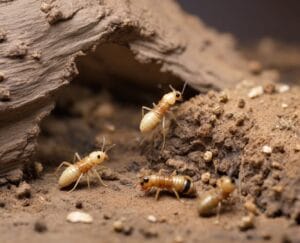
If you see signs of termites, don’t wait. Here’s what to do immediately:
- Remove food sources: Keep wood, paper, and other cellulose materials away from your home’s foundation.
- Reduce moisture: Fix leaks and ensure proper drainage around your home to make it less appealing to termites.
- Contact a professional: A termite specialist can assess the situation and recommend the best course of action.
Communicating with Professionals: How to Convey Urgency
When you call a termite control professional, be clear about what you’ve observed. Mention any signs of termites, like mud tubes or damaged wood, and stress that you’re concerned about potential structural damage. This will help them understand the urgency and prioritize your inspection and treatment.
The Economics of Infestation: Repair Costs Demystified
Understanding the financial implications of termite damage is crucial for homeowners. It’s not just about the cost of repairs; it’s about the loss of property value and the potential for even more significant expenses if the problem isn’t addressed quickly.
Estimating Repair Costs: What Influences Your Quote
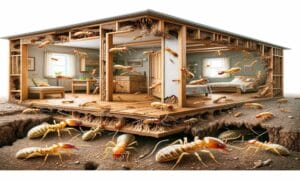 Several factors influence the cost of termite damage repairs:
Several factors influence the cost of termite damage repairs:
- The extent of the damage: Minor damage will be less expensive to repair than structural damage.
- Location of the damage: Hard-to-reach areas may increase repair costs.
- The cost of materials and labor in your area.
Repair Expenses: Minor, Moderate, and Severe Damage Scenarios
Repair costs can vary widely. For minor damage, you might spend a few hundred dollars. Moderate damage, such as partial structural wood replacement, could cost several thousand. Severe damage that compromises the home’s integrity could run into the tens of thousands. Understanding the early signs of termite infestation can help in preventing such extensive damage.
Prevention Pays Off: A Comparative Analysis
When we compare the costs of prevention to those of repair, prevention is the clear winner. Regular inspections and treatments are far less expensive than the cost of repairing structural damage caused by termites.
Long-Term Savings: The Financial Benefits of Proactive Measures
By investing in termite prevention, you’re saving money in the long run. The cost of regular inspections and treatments is a fraction of the potential repair costs. Plus, you’re maintaining your home’s value and avoiding the stress and inconvenience of extensive repairs.
Case Study Summaries: Prevention vs. Repair Costs
Consider a homeowner who spends $1,500 on termite prevention over five years. This is a fraction of the potential $10,000+ repair bill another homeowner faced due to extensive termite damage that went undetected. The choice is clear: prevention is not only smarter, it’s more economical.
Top 5 Effective Strategies for Termite Prevention
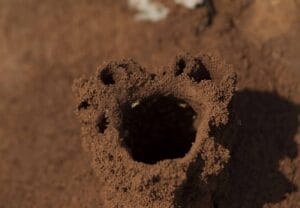
Here are five strategies you can use to keep termites at bay:
1. Landscape Practices to Discourage Termites
Adjust your landscaping to prevent termites:
- Keep plants and mulch at least 18 inches away from your home’s foundation.
- Use termite-resistant wood for decks, fencing, and other outdoor structures.
- Ensure gutters and downspouts direct water away from your home.
2. Moisture Control: Keeping Your Home Dry
Termites are attracted to moisture, so keeping your home dry is essential:
- Fix leaks promptly.
- Ensure proper ventilation in crawl spaces and attics.
- Use dehumidifiers in damp areas of your home.
- Early detection of termites can save thousands in repair costs.
- Regular inspections are crucial for termite prevention and peace of mind.
- Termite prevention treatments are a worthwhile investment compared to damage repair costs.
- Professional termite prevention is often more cost-effective than DIY in the long run.
- Understanding the signs and costs associated with termite damage is key to making informed decisions.
3. Barrier Treatments: The First Line of Defense
Barrier treatments are exactly what they sound like – they keep termites out by creating an underground barrier around your home. These treatments involve applying termiticides to the soil around and under the foundation. Termites that try to cross the barrier are either repelled or killed, ensuring your home stays protected.
Now, you might be thinking, “How much is this going to cost me?” Well, it depends on the size of your home and the type of treatment. On average, you can expect to pay anywhere from $1,200 to $3,500 for a professional barrier treatment. It’s a significant investment, but it’s a small price to pay to avoid the extensive damage these pests can cause.
- Choose a reputable pest control company with a proven track record.
- Ask about the longevity of the treatment and any guarantees offered.
- Consider the environmental impact and safety of the treatment options.
Most importantly, remember that this is not a one-time deal. Regular re-treatments are necessary to maintain the barrier’s effectiveness, usually every five to ten years, depending on the product used and the conditions of your property.
4. Bait Systems: Smart Monitoring and Control
Bait systems are a more modern approach to termite control. They consist of bait stations placed around your property to monitor and eliminate termite colonies. Termites feed on the bait and take it back to their colony, effectively poisoning the entire group over time.
5. Regular Professional Assessments: Ensuring Continued Safety
- Schedule annual termite inspections to catch potential problems early.
- Follow the recommendations of your pest control professional to address any vulnerabilities in your home’s defense against termites.
- Stay informed about the latest termite treatment options and choose the best one for your home and budget.
These regular check-ups are the equivalent of taking your car to the mechanic for a tune-up; they help ensure everything is running smoothly and can prevent bigger issues down the line. And just like your car, your home is one of your biggest investments, so it’s worth the effort to keep it in top condition.
Frequently Asked Questions
Here are some common questions homeowners have about termites, prevention, and repair:
How often should I get my home inspected for termites?
It’s recommended to have a professional termite inspection at least once a year. If you live in an area with a high termite risk or have had termites in the past, you might want to consider more frequent inspections.
Regular inspections can catch termites before they cause significant damage, saving you a lot of money and stress in the long run. Think of it as an annual check-up for your home’s health.
Are termite prevention treatments safe for pets and children?
Yes, when applied correctly by a professional, termite prevention treatments are safe for both pets and children. Modern termiticides are designed to target termites specifically, and once they dry, they pose minimal risk to humans and pets.
However, always discuss safety precautions with your pest control provider and follow their guidance during and after treatment application.
Can I repair termite damage myself?
If you’re handy and the damage is minor, you might be able to tackle repairs yourself. However, it’s crucial to ensure the termites are completely eradicated before you begin repairs. Otherwise, they’ll just continue to eat away at your hard work.
For extensive damage, especially structural, it’s best to hire a professional. They have the tools and expertise to ensure the repairs are done correctly and safely.
What are the signs of severe termite damage?
Severe termite damage can manifest as sagging floors and ceilings, buckling wood, and visible mazes within walls or furniture. If doors and windows become difficult to open or close, it could also indicate termite damage to the frames.
If you notice any of these signs, contact a termite professional immediately. The faster you act, the better your chances of minimizing damage and repair costs.
Is termite damage covered by homeowners insurance?
Unfortunately, most homeowners insurance policies do not cover termite damage. Insurance typically covers sudden and unexpected damage, not something that occurs over time, like termite infestation.
That’s why prevention is so important. Investing in regular inspections and treatments can save you from facing a hefty repair bill that you’ll have to pay out of pocket.
Understanding the early signs of termite infestation and taking preventative measures can save homeowners a significant amount of money in the long run. By identifying potential issues early, you can avoid the extensive costs associated with termite damage repair. For more information on detection and prevention, consider reading this comprehensive guide on termite infestation prevention.
